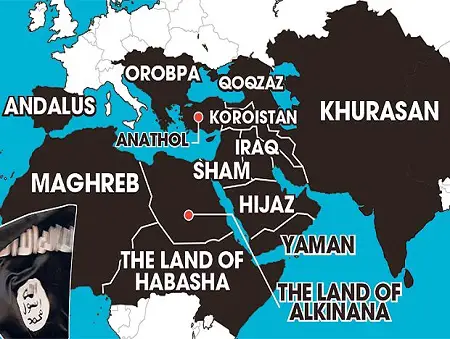Two explosions occurred at the airport in Kabul, Afghanistan, on 26 August, with dozens of dead and wounded, including at least 12 American soldiers. It is reported that the attacks were a kamikaze attack and a car bomb near the airport, which for days has been besieged by thousands of Afghans trying to leave the country controlled by the Taliban.
“It was an ISIS attack. They will pay for it,” said Joe Biden, the President of the United States. Earlier in the month, he had claimed that there were no ISIS or Al Qaeda in Afghanistan only to be contradicted by the Pentagon. At least 60 Afghan civilians were killed. The Pentagon confirmed the death of the 12 soldiers and the wounding of 15 others. During a briefing, the commander of the United States Central Command (CENTCOM), General Kenneth McKenzie, explained that two suicide bombers were involved and that after the explosions, “men of the Islamic State” opened fire.
ISIS has claimed responsibility for the attacks. The claim came through Amaq, the propaganda organ of the terrorist organization. Images of a man on the internet, identified as Abdul Rehman Al-Loghri, indicating him as the “martyr” who blew himself up near the airport in Kabul. Al-Loghri was able to “overcome all the security fortifications” at Kabul airport, arriving “within five meters of American forces,” the Islamic State said in its message of demand. In the note claiming the attack, ISIS accused the Taliban of being “in alliance” with the US military to evacuate “the spies.”
A previous message relayed to the media by the terrorist organization, states “the soldiers of the Caliphate are preparing for a new phase of their blessed jihad, which will not stop.” In the same message, ISIS defined the Taliban’s conquest of Afghanistan as “nothing more than the replacement of a shaven tyrant with a bearded one.”
Who are the ISIS-K terrorists?
The intelligence agencies are suspecting the Islamic State of the province of Khorasan, a terrorist group known as ISIS-K or ISKP, for the attack. For the past few days, the agencies had warned of the group’s intention of hitting the airlift operations in Kabul with a suicide attack.
The group was founded six years ago in the southwestern Pakistani province of Balochistan during a meeting between two ISIS emissaries and a group of Taliban disappointed by their commanders. At the time, the Islamic State was in full swing and controlled large parts of Iraq and Syria.
The letter ‘K’ in ISIS-K stands for the province name of Khorasan or Greater Khorasan refers to medieval Muslim empires between parts of Iran, Afghanistan, and Central Asia.

ISIS believes that the Taliban have abandoned the Muslim faith, as they have agreed to deal with the Americans. ISIS considers the Taliban too pragmatic and not strict enough in applying Islamic law. In Afghanistan, both the Taliban and al Qaeda opposed the expansion of ISIS-K, as did the deposed government in Kabul and Western forces. Due to this, the group was in difficulty in 2019 and the first part of 2020: it controlled little territory and had suffered losses of leaders and militants.
A report prepared for the UN by the intelligence agencies stated that the group was, at that time, in such difficulty that amnesty could be offered to those who have deserted it. It was estimated that it had between 1200 and 1500 fighters in small areas of the provinces of Kunar and Nangarhar and had decided to decentralize the activity with small cells in various parts of Afghanistan.
But since June 2020, the group has equipped itself with a new leader, who is an Arab, unlike his Pakistani predecessors. In the first four months of 2021, the UN mission in Afghanistan counted 77 attacks claimed or attributed to ISIS-K perpetrated against the Shiite minority, journalists, foreigners, military, and civil infrastructure. It is not clear if this means if the group is strengthened or uses a different strategy. Earlier this year, intelligence officials had reported to the UN that the group was trying to recruit disgruntled Taliban. Many ISIS-K fighters are not Afghans; they come from Pakistan, Tajikistan, and Uzbekistan. The link with the ISIS leadership in Iraq has remained, but it is unknown how close it is and whether they get orders.
The ISIS-K remains committed to striking in the West as well. The Taliban could try to prevent this, as they promised to do, but they may not necessarily do so as the Taliban does not control the entire Afghan territory. There is a lot of regions that ISIS can use. Soon, they may want to make attacks to remain in the news.
How is the US planning to retaliate?
“We have reason to believe that we know where the leaders who ordered the attack are,” he said, referring to members of ISIS-K, the Islamic State of the province of Khorasan. Biden ordered the military leaders to “develop operational plans to target ISIS-K targets, leadership, and structures. “We will respond with force and precision, when we decide, in a place that we will identify and in a way that we will define,” he said.
